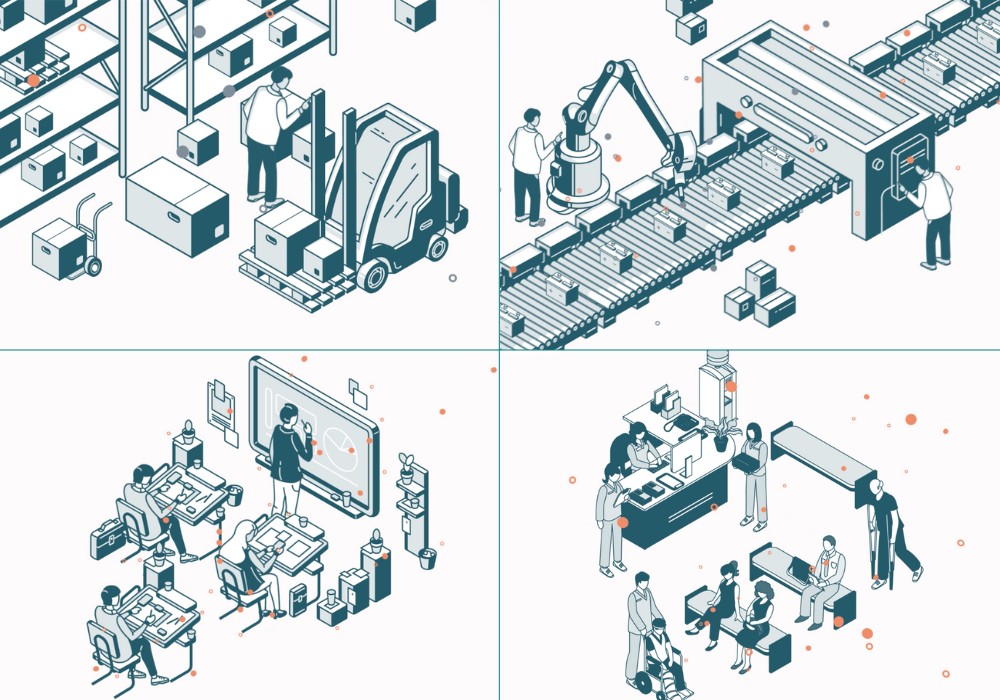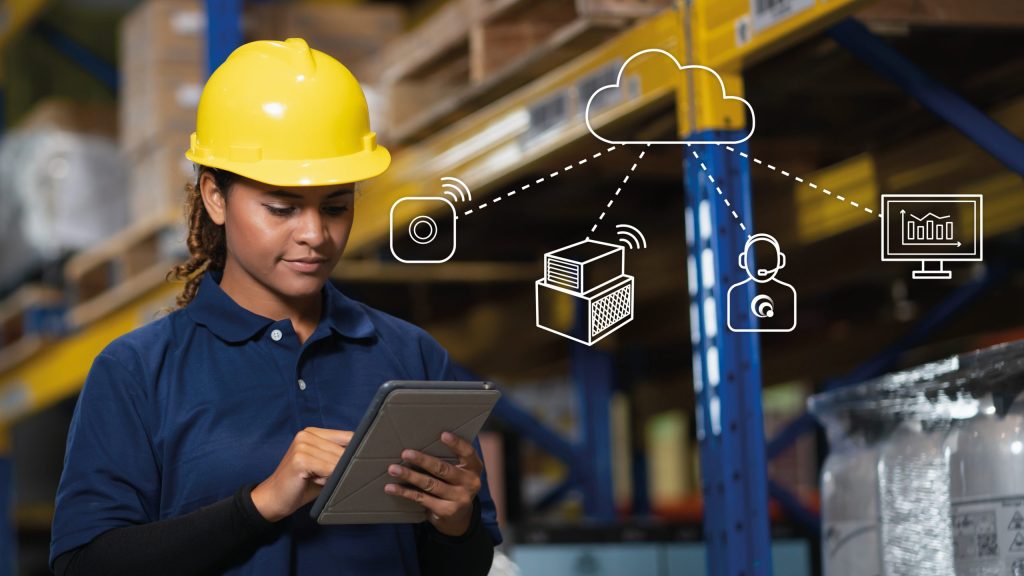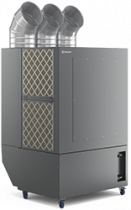
How do I know if I need freestanding air cleaners in my production facility?
In the manufacturing industry, air quality is often a crucial factor for a good working environment, but also for ensuring a high level of technical cleanliness and longer product life – whether the products manufactured or processed are pharmaceutical, plastic, metal or paper products. Often, both general ventilation and process ventilation have been installed at the premises, but this does not always solve the problem with bad air quality or the amount of particles in the air.
So how do you know if a separate air cleaning solution can add additional value? The answer is: It depends on several factors and can vary considerably.
Is there a need for stand-alone air cleaners?
In order to determine whether there is a need for a separate air cleaning solution consisting of freestanding air cleaners, one should first evaluate the situation in relation to any national limit values for indoor air. But even if the limit values are complied with, this does not necessarily mean that the air is healthy. It is also important to consider how the working environment is perceived by employees. Are there potential risks of health issues due to by-products arising during the production process, and how are these by-products managed? In addition, anomalies in production processes, such as machine maintenance, production stops or quality issues, may indicate that indoor air quality is a problem.
Four steps to consider
1. Make an independent particle measurement
The first step towards clean air is to measure it. An air quality measurement conducted by an independent consultant for technical workplace safety can help you identify risks related to air quality in your facility. When a particle measurement is made in the facility, it is important that measurements are made in different parts of the premises; in the vicinity of different production processes and other areas where work activities are carried out. This gives you a good insight into the particle levels in the premises and any variations that may occur.
2. Compare the particle measurement with national limit values for indoor air
How do the indoor air values in your production facility compare to the established limit values in your country? Is it necessary to take action to meet – or even exceed – the national limit values?
Limit values are imposed to limit air pollution in a workplace. These are legally binding and cannot be exceeded. The so-called hygienic limit value is a weighted assessment of the health risks in terms of what is both technically and economically feasible in a workplace. The most important thing is to keep all air pollutants at as low levels as possible, which a stand-alone air cleaning solution can help with.
3. Understand the working environment and the health of employees
What is the working environment like for your employees? Are there risks of health issues or reduced productivity due to bad air quality? Bad air, odors or similar can be a strong indicator that you need air cleaning.
There are a significant number of substances, both natural and chemical, that have allergenic properties. When it comes to substances that can trigger allergic reactions in the respiratory tract, the permitted limits are usually particularly strict. There are also particles that can contribute to an increased risk of developing serious health issues, such as asthma, lung infections, cardiovascular disease and even lung cancer. The Public Health Agency of Sweden emphasizes that if employees experience bad air, odors or discomfort, this should be investigated and self-monitoring should be carried out. According to Swedish regulations on systematic work environment management, checking and addressing air quality is also part of the ongoing work on the working environment at the workplace. The addition of freestanding air cleaners can contribute to a significant reduction of harmful particles in the premises.
4. Evaluate any disruptions of processes
Have you noticed any deviations in production processes? Could poor air quality be a contributing factor to machine breakdowns or product quality problems? Dust consists of very small solid particles that can be generated from both processes and materials. It forms a layer on all kinds of surfaces, especially on machinery, which can lead to increased maintenance needs and machine failures as well as dirty products.
A complementary air cleaning solution filters out large amounts of dust and other small particles and gases and can protect your machinery and production processes.
An investment and a strategic measure
By investing in an air cleaning solution consisting of stand-alone air cleaners to complement your existing ventilation system, you may not only comply with regulations and standards, but can also improve the working environment for your employees as well as the quality of your products, and increase the efficiency of your processes, which can ultimately impact your company’s overall performance.
Which air cleaner should you choose?
The most suitable air cleaner depends on the needs of your company, i.e. the type of particles or gases present in your premises, the size of the premises and the activities carried out there, etc. Do your research and consult an expert before making a decision.
One step closer to clean air
QleanAir has over 30 years of experience in developing customized air cleaning solutions, including stand-alone air cleaners. Our customized solutions protect people, products and processes by meeting specific needs in production facilities.
We support you on the way to a healthier, safer and more productive work environment. Welcome to contact us for a free consultation.
Contact us









